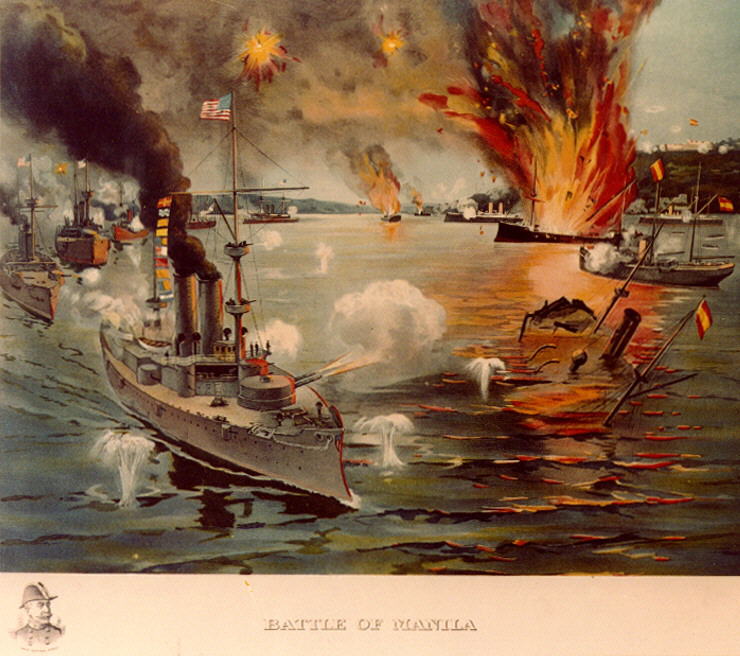Civil War Echoes: Manila Bay 1898
Today in 1898, 120 years ago, the Asiatic Squadron under Commodore George Dewey entered Manila Bay seeking to destroy the Spanish flotilla anchored inside near Cavite. Dewey’s ships sailed past Corregidor, an island that would mean much more in U.S. military history later. Shortly after dawn, the Americans opened fire and by lunchtime had wrecked the Spanish ships. Spain’s power in the Far East was broken, and Dewey had scored the first American victory in the War With Spain. (An excellent overview of the battle can be found here.) 
Dewey’s victory carries two significant Civil War Echoes.
The first is Dewey himself. As a young officer, he was second-in-command of USS Mississippi during David G. Farragut’s expedition to New Orleans and up the Mississippi River in 1862. Farragut’s planning and leadership impressed Dewey, and ever after Dewey took Farragut as his role model – even at points of decision asking himself “What would Farragut do?”
Dewey later admitted that passing Corregidor evoked similar feelings as the lead-up to the night battle for Forts Jackson and St. Philip in 1862.
To open the battle, Dewey gave a famous order to Charles Gridley, the captain of his flagship USS Olympia: “You may fire when you are ready, Gridley.” Captain Gridley was a young officer about USS Oneida in 1864; distinguishing himself during the Battle of Mobile Bay. That ship had run a passage of Confederate forts and then helped subdue a Confederate squadron in the bay itself. His and Dewey’s experience running forts helped steel their nerves for the passage into Manila Bay past Corregidor and neighboring islands.
These two officers, who cut their teeth in Farragut’s greatest victories, combined to produce another of the great victories in the history of the U.S. Navy.
Image: a U.S. Navy print showing Dewey’s ships engaging the Spanish. USS Olympia is in foreground.
Farragut Naval Station in North Idaho continues to serve our Nation today, 150 yrs latter, in the development of naval equipment and deep water vessels.